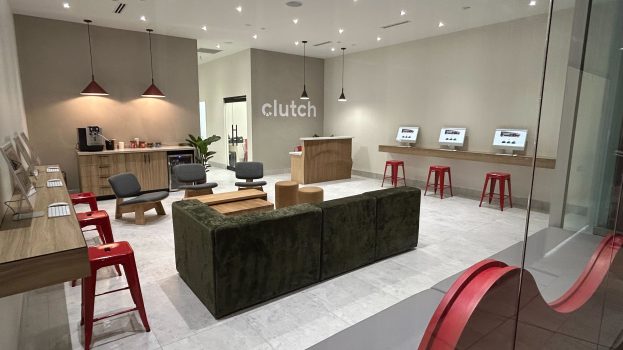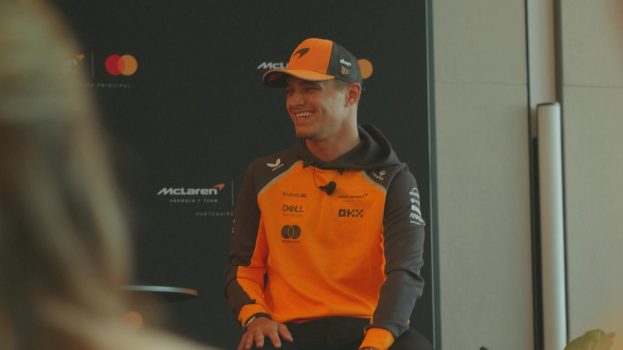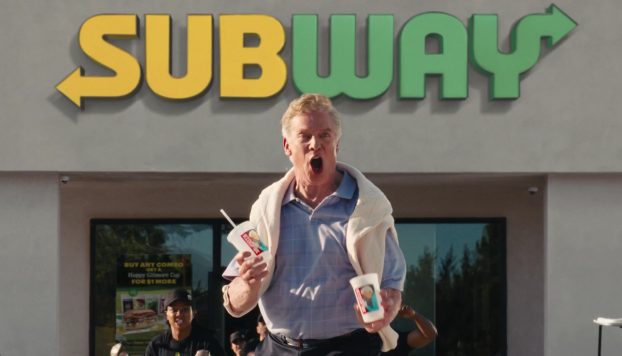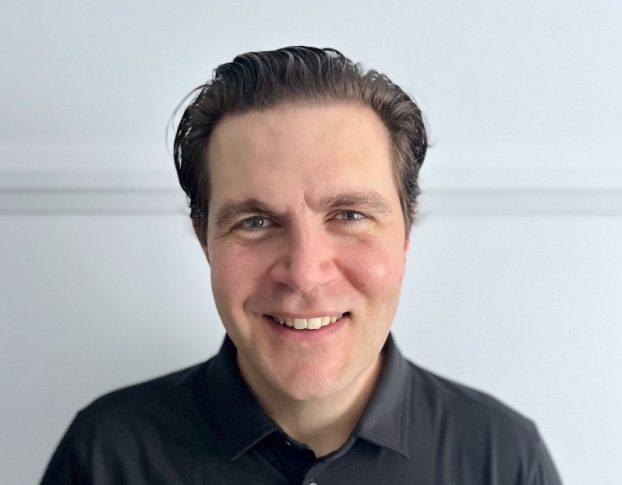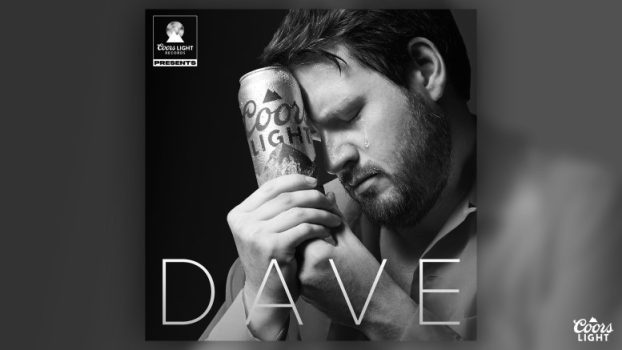A year after joining Volkswagen Canada, Peter Blackwell, director of marketing, is moving the company in a new direction.
In the past year, he’s helped the brand launch three branded content executions for the Beetle line, including a 30-minute documentary about a 1955 Beetle in partnership with Oscar-nominated director Hubert Davis, and a partnership with Burlington-based band Walk Off the Earth, which featured three cuts of their popular song “Gang of Rhythm,” using the car as an instrument.
Working with its agency partners Red Urban and Mediacom, it also introduced a handful of new spots to inform Canadians that the brand’s best-selling line, Jetta, wasn’t as expensive as they thought. One spot, for example, featured a woman visiting her local butcher to buy steaks. When she notices two Jettas hanging behind the counter, she asks “How fresh is the Jetta?” and decides she’ll purchase one on the spot. Continuing that line of absurd car-in-situ scenarios, to re-introduce the cross-over Tiguan line, a spot likened the car to a horse in a stable.
No longer content being a niche player, and capitalizing on a global push to be the number one car maker worldwide, Volkswagen Canada is undertaking an ambitious growth plan to increase market share to 5% by 2018 in an ultra-competitive category, up from its current 3.7% (after six years of consecutive growth), with the top three manufacturers capturing 43.2% share.
The company, which has eight car lines in Canada, tapped Blackwell following stints as VP marketing at Canadian Tire and director of strategy at Kraft Canada to widen the brand’s appeal, increase its product lineup and reintroduce itself to Canadians.
Read on to hear more from Blackwell on his strategic plan for the niche automotive player.
Between the Beetle’s CBC online, cross-country road-trip indie music festival tour, a partnership with Walk Off the Earth and a documentary, you’ve got a pretty solid year’s worth of branded content behind you. Do you plan to continue investing in it?
Absolutely.
Obviously, the product has to work, it’s got to fit and be the right price. But the [experiences] that take the business and the brand over the top [of the consideration heap], are the ones that are harder to pin to the physical-ness of the product.
 Those are the ones where the customer is saying, “Wow, they just get me as a person. They offer me experiences that I can link to the product. They take me on a road trip experience that I can see myself on or that I wish I could go on.”
Those are the ones where the customer is saying, “Wow, they just get me as a person. They offer me experiences that I can link to the product. They take me on a road trip experience that I can see myself on or that I wish I could go on.”
At the end of the day, [buying a car] is a shockingly large expense, so you better be getting a heck of a lot more than metal, seats and an engine. It’s an asset that the more you use it, the less valuable it becomes. So we’ve got to add value in other ways – we’ve got to make you feel like that was worth every penny you spent on it from the day you got it to two years after you traded it for something else.
We want you to look back and say, “Volkswagen is the best vehicle I’ve had in my life” beyond just, “it performed well.”
What has your mandate been since you came on board?
We were doing a lot of stuff and spending a lot of money compared to the size of our business. But it wasn’t very well organized. It was very project-by-project based and led by sales’ short-term needs – “We need to move this model in the next quarter, so can you put some marketing against that?”
So my job was to say, “How do we take the money we are spending, and spend it in a much more strategically thought-out, integrated way? And how do we deliver a marketing presence that seems more ‘always on?'”
We significantly stepped up the number of models we support against, the amount of time in the year we were in market, and so forth, [traditionally supporting two or three a year for a few months. In 2014, seven will get marketing dollars].
The second phase, which we’re moving into now, is to significantly build our business over the next three to five years.
One of the core things, and it’s not unique to automotives, is putting digital and CRM at the core of your marketing world. The power of merging digital and what you could do with customer-specific information is really what drives ROI. How do we take all that data we got with our finance division, mine it for insight and leverage the possibility of digital to play that back in a very targeted way to our customers?
The path to purchase is a much longer one [in automotive] with very different steps [than CPG and retail]. You can really dig deep and get engaged.
Being a smaller player, for a long time (and it was the right thing to do at the time), you tended to pursue the strategy of watching what the mid- to big-sized guys are doing and try and do as much of that as you can.
But as you get bigger, if you want to continue to win the battles, you’ve got to outsmart them. You can’t outspend them – they’ll bury you into the ground – so you’ve got to out-strategize them and that starts with data.
Can you give an example?
We say internally that we’ve got to be careful that we don’t become the “Jetta” brand. Half our sales are Jetta, but we sell seven other models. And the easiest and obvious thing to do would be to put more marketing support behind Jetta, but how do we get a more balanced portfolio approach to our models? There are a couple [models] that, when you dove into the numbers, had fairly low awareness but were in high growth segments in the industry – like our Tiguan SUV.
And we knew from the data that people who got to know it absolutely loved it.
So we carved out some marketing dollars for the first time since it launched in Canada a few years ago. We mined data to really target the right messaging to [the right] potential customers and we drove a 50% increase in the back-half of last year on that model simply by using knowledge better.
[We targeted people] largely through digital and and through our dealers. We combined the data from Volkswagen credit [financial transactions], search metrics or digital display ads corporately and the data at the dealership level of customers they’d dealt with, and we mined it to figure out who is most likely to buy a car in the next 60 days [pulling from existing owner lists and competitor owner lists], who is pre-disposed to the Tiguan, and how do we put the right incentives and marketing dollars against those people and not waste our money on people who may never even consider [buying a Tiguan. With informational, web-based marketing messaging.]
The idea of not casting your net out to the entire market took some getting used to, especially for dealers. It’s a very uncomfortable thing for them – that’s 70% of the people you’re not going after. But we used data to show them that the 30% we are going after, we know there’s a 90% chance of sealing the deal with them.
 You still had a mass-market campaign (featuring a man treating the SUV as a horse) for the Tiguan. How did you determine the appropriate mix?
You still had a mass-market campaign (featuring a man treating the SUV as a horse) for the Tiguan. How did you determine the appropriate mix?
There’s always going to be a role for building brand awareness, brand image and equity. But the days of that doing everything for you are gone. The number one issue at the top of the consideration journey to check out [a Tiguan] was consumers either didn’t know we had that vehicle or they assumed it was too expensive.
We specifically developed mass marketing in TV and radio to do just those two things. And then we’re going to stop. Then CRM to digital does all of the lower-level [communication]: “Here are the specific features, the fuel economy. Here are the aspects that you as the consumer would like.”
It used to be the dealer who walked you through the car specs and price. Now, consumers do it
at home.
Now it needs to be the corporation doing a much better job at the selling, which means more and more of our marketing is [sales] and that’s delivered in channels that 99% of the time you don’t see day to day.
Yes, there are still TV ads that help reinforce that beloved brand character, but in terms of imparting new information, we have to be really selective and it’s usually just to remind you we’ve got this vehicle, and remind you that in our case, it’s way more affordable than you probably think.
How does your background at retail and CPG companies prep you for working at Volkswagen?
They were looking for somebody from outside of the industry.
The automotive industry has a history of putting people from non-marketing roles in the company and saying, “here, you do it.” It was a service role previously.
[Volkswagen] realized to get the full potential out of the brand, they needed someone who was trained in doing that.
They had already experienced a couple of years of fairly significant growth – 50% between 2008 and 2012 – and the momentum was still there. So they said, “Marketing can play an even bigger role if we let it.”
The company globally also elevated the role of marketing to a higher level than it traditionally had been in the last few years [in an effort to] make this the biggest automotive business in the world.
 How has the marketing team evolved over the past two-and-a-half decades?
How has the marketing team evolved over the past two-and-a-half decades?
The brand, in North America, went through some dark days in the early ’90s, to the point where the company almost pulled out. They decided not to, but one of the decisions was to collapse the two organizations [United States and Canada].
When they got the business back on the right track in 2008 they said it was time to split the business off again. So the Canadian organization was re-created.
They were certainly more strategic in who they brought in – with some junior staff who are very savvy marketers – and they led some grassroots promotions, like Art Heist [which featured framed photos of the car’s lights, placed around Toronto, encouraging passersby to steal them].
Even as I stepped in, it was a very small team with about six people [now, with eight].
What are some of the biggest challenges you’ll face in trying to meet your stated goal of increasing market share to 5% from 3.7%?
Ultimate growth is going to be found in our product portfolio mix. Are there other sectors of the industry that we should have vehicles in that we’re not in?
SUVs are huge in North America. We’ve got eight models of vehicles, but only two are SUVs.
That’s a big focus for us: how do we get more selection or offering for customers?
We [used to] map our product offering to match what’s being offered by the bigger guys, [thinking] “Well, they must know, or have proven that those are the right models.”
We’re starting to say, “How do we understand what consumers are looking for and how do they make decisions? So that we can feed that information to the product guys so they can make better decisions.”
I think over the next few years you’ll start to see us branching out a little bit from “me too” offerings to [an attitude of] “This is the right price and the right vehicle, but nobody sells something like this.”
We’ve also got to hold onto the customers we’ve already got. If we’re trying to grow, the last thing we want to do is bleed customers on one side of the business.
The whole industry is so focused on the transaction and sale of the vehicle. But many Canadians will hold a vehicle for five or eight years or will drive it into the ground. The industry has a tendency to pour a whole lot of effort and attention into getting people to buy that new car. We go radio silent on them for the next three to five years and all of a sudden we re-engage them. We’ve got to figure out ways to create a reason for an ongoing relationship with customers.
The key to success is not to simply have an address or an email to contact people and bug them all the time. It’s to understand the role the product plays in their lives, two months, two years or three years later. And do the things we need to do to make that [interaction with the car] the best it could be.
What kind of marketing would we do differently if we approached it as, “We’re here to help you get the most out of your ownership of the car” versus the purchase of the car?
Would we offer you services that relate to owning and using your car on a daily basis?
Finally, to win new customers, the challenge is to forget about our 60-year history and pretend that we just hit Canada today and we need to introduce ourselves.
There’s a big difference between “knowing of” somebody and truly knowing somebody. Everybody knows of Volkswagen. But we only have three-and-a-half percent of the population that truly knows us.
And that’s a big change for Volkswagen. For a long time we were very proud to be a niche player that wasn’t for everybody – those who love you, love you a lot – but there was a conscious decision for us to break out of that. It takes a lot to change the habits and get comfortable to say, “Maybe I need to do more of the work to grow this relationship.”


